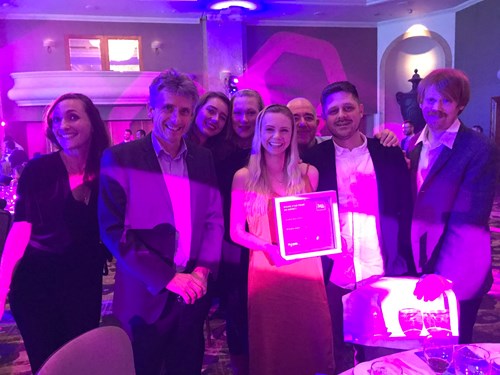Travel marketing
It’s that time of the year again: when travel marketers start casting our minds back to everything that we’ve done over the last twelve months and wondering whether any of it was any damn good – at least in the eyes of our peers.
Despite the fact that we spend every day of our working lives marketing travel products there’s always a bit of “shall we, shan’t we” navel-gazing at mr.h before finally deciding what work we will, or won’t, enter in the annual bun fight.
That said, mr.h has had a fair share of success over the years, so whilst it would be presumptuous to say that we know the secret of success we can probably offer some useful guidance on improving your chances, especially if award entries are not something that you deal with on a regular basis.
So here are a few pointers that should help you prepare your entry and hopefully get you on the shortlist:

1. Find the time.
Don’t underestimate how long this is going to take. Preparing an entry is like writing an inspiring creative brief. Even if you are well prepared it can take a day. And if you are thinking about multiple entries it will take longer. If you are entering work in more than one category, don’t even think about copy and paste. If your work was designed to help fulfil more than one objective your entries must reflect individually how those specific objectives were met.
2. Have all the facts to hand.
It may sound obvious but this will make summarizing what you did so much easier when you are writing several months after the event. A lot of things will have happened in the meantime and it’s easy to lose sight of the original objective. Take time to re-acquaint yourself with the original brief and the detailed results. Then pick out what’s important.
3. Choose the right category.
Some of your work could be eligible for a lot of different categories but there is usually one category that is more relevant than the others. Spreading your entries around might feel like having more tickets in the lottery but it can get expensive, and it’s never worked for us.
4. Know the competition.
If you are on top of your game you should know which brands you are likely to be up against in your chosen category. Now is the time to be brutally honest with yourself. Has there been a standout campaign in your sector over the past 12 months? Each year there tends to be one or two campaigns that scoop a high percentage of the prizes. If that brand happens to be in your sector or is likely to be in your chosen category, perhaps this isn’t going to be your year.
5. Make sure that you understand the judging criteria.
The criteria are explained on the TMA website but the basic point to grasp is that these awards are not just for the creative luvvies, it’s a balanced scorecard with a requirement to show creative thinking allied to a grasp of commercial realities. You need to provide evidence of marketing insight, attention-grabbing creative and measurable results.
6. Get to the point.
The judges don’t have time for humdrum. They are an audience that needs to be entertained too, so make sure that your story is told in an engaging and, ideally, surprising way. Imagine what it must be like wading through hundreds and hundreds of submissions. If your work is as great as you think it is and your exhibits show if off to good effect you can keep the explanation brief (Remember that it is harder to write fewer words that to write more). And don’t overdo the results either, just call out the KPI’s that truly reflect the objectives of the campaign and best paint a picture of success.
7. Prepare your supporting material
You are only allowed one exhibit, so if your work can be summed up with one telling image, go for it. If it’s a more complicated campaign or there are multiple touchpoints then you are going to have to produce something that is custom made and demonstrates, as painlessly as possible, how all the elements fit together. You don’t need an expensive video to do this – a great idea can be sold with a scribble.
8. Check for mistakes
Make sure that you avoid any schoolboy errors when you fill in your entry form. My wife tells a story from school days when she was entered for a cookery exam. She was handed instructions that started, ‘’It’s your baking day…’’ So she prepared a salad. You won’t be picking up any cubes if you don’t read the instructions properly either.
9. Finally
Keep your fingers crossed and hope that the judging panel thinks that your work is as good as you do. Inevitably there’s a degree of subjectivity in this. Effective marketing is usually about making an emotional connection with your audience and you can’t win them all. We are just about to submit our entries for 2020. Wish us luck!